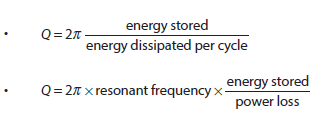|
Nature of science:
Risk assessment: The ideas of resonance and forced oscillation have application in many areas of engineering ranging from electrical oscillation to the safe design of civil structures. In large-scale civil structures, modelling all possible effects is essential before construction. (4.8)
|
Understandings:
- Natural frequency of vibration
- Q factor and damping
- Periodic stimulus and the driving frequency
- Resonance
Applications and skills:
- Qualitatively and quantitatively describing examples of under-, over- and critically- damped oscillations
- Graphically describing the variation of the amplitude of vibration with driving frequency of an object close to its natural frequency of vibration
- Describing the phase relationship between driving frequency and forced oscillations
- Solving problems involving Q factor
- Describing the useful and destructive effects of resonance
|
International-mindedness:
- Communication through radio and television signals is based on resonance of the broadcast signals
Utilization:
- Science and technology meet head-on when the real behaviour of damped oscillating systems is modelled
|
Guidance:
- Only amplitude resonance is required
Data booklet reference:

|
Aims:
- Aim 6: experiments could include (but are not limited to): observation of sand on a vibrating surface of varying frequencies; investigation of the effect of increasing damping on an oscillating system, such as a tuning fork; observing the use of a driving frequency on forced oscillations
- Aim 7: to investigate the use of resonance in electrical circuits, atoms/molecules, or with radio/television communications is best achieved through software modelling examples
|

